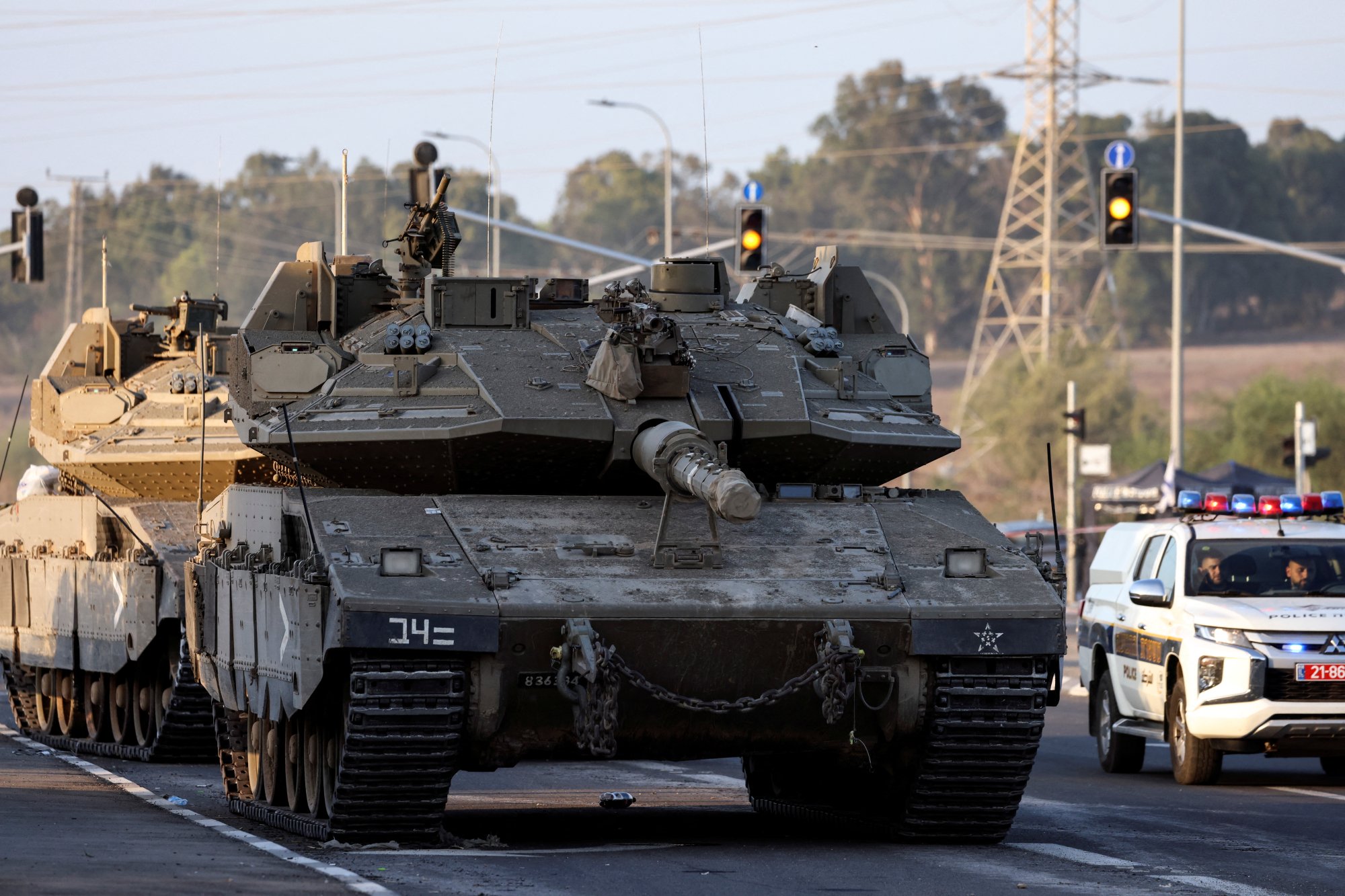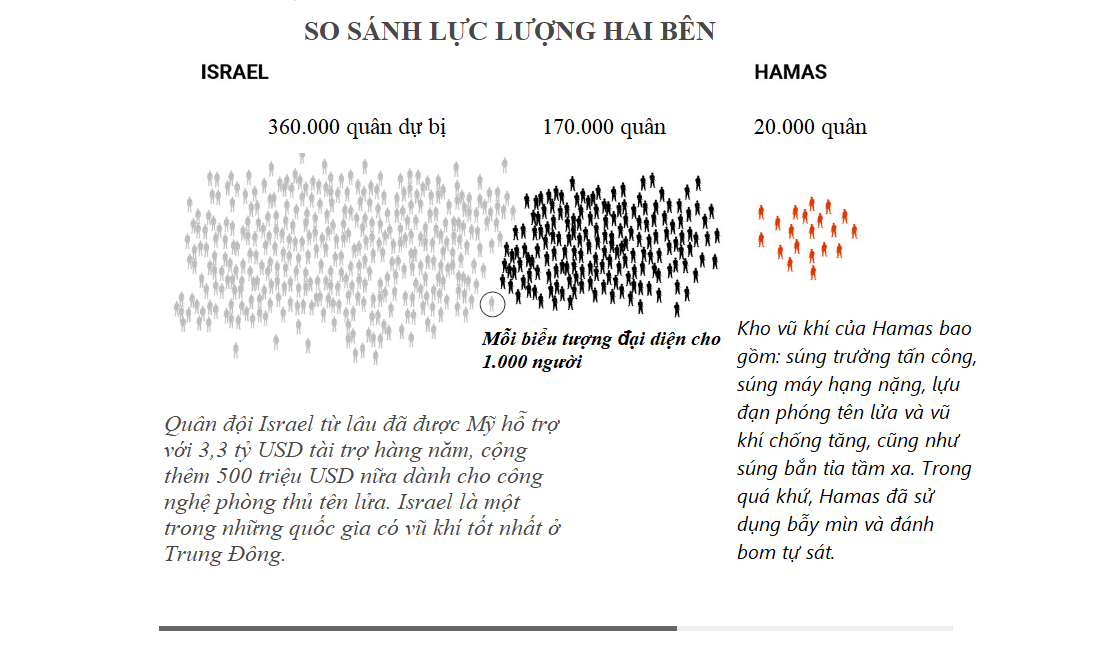Leaving aside for the moment the very important question of what would constitute victory for either side of the war, it is appropriate at this point to consider each side's approach to the impending battle.

Israeli tanks near the border with the Gaza Strip. Photo: AJ
Every commander tries to exploit his own strengths and his opponent's weaknesses, and the Israeli military and Hamas are no exception. They know each other from past clashes and both have extensive combat experience. It is almost certain that both have access to intelligence from their friends and allies.
Israel's offensive power and Hamas's defensive capabilities
What are the strengths of the Israeli forces? First and foremost is their overwhelming advantage in well-trained and equipped manpower, with nearly 500,000 troops deployed across Israel and the occupied West Bank.
Hamas can probably muster only 10,000 fighters who are properly trained and equipped for the specialized missions it will undertake. That could easily grow to 100,000 if volunteers are willing to fight, but without proper tactical training and equipment, they may not be able to contribute much.
The Israeli army will rely on superiority in the quantity and quality of its equipment, better training, discipline and specialization. Clearly defined levels of command, flexibility in combat and coordination in all areas of the battlefield, and tactical surprise through the use of new approaches and new weapons.

Comparing the two armies. Graphic photo: SCMP. Source: AP
What works in Hamas's favor is that they are fighting on "home turf," where they know every nook and cranny, every building. In addition, the tunnels that Hamas has been digging for years in Gaza are an extremely solid defense system.
Will the battle take place at night?
Only top Israeli commanders know the details of the attack plan and timing, but the main lines of action for Israel can be predicted as follows: The full-scale attack will almost certainly begin at night.
Most Israeli soldiers are issued night vision goggles and trained in their use. Much more importantly, Israeli aircraft, manned planes, and helicopters can also operate in complete darkness.
The Palestinian Defense Forces certainly have some night vision equipment but are unlikely to be able to target and hit drones at night unless they are lucky. Most Israeli bombers will be able to launch missiles from outside Gaza airspace.
Smart bombs could be used to help keep planes out of range of the few anti-aircraft launchers Hamas has.
The horseshoe-shaped airspace west, north and east of the Gaza Strip would be flooded with Israeli aircraft. Minutes before the forces entered, converted civilian Gulfstreams and Super King Airs of the Israeli air force would begin intercepting electronic communications.
This would render cell phones inoperable and communications towers would be targeted in the first wave of airstrikes. Other communications, including land-based telephone and internet lines, would be electronically jammed and rendered unusable.
Coordinated land and sea attacks would follow, coming from multiple directions at once, probably around midnight. This would give the attackers the advantage of six hours of night vision.
The ground forces would move through the separation wall that Israel is building around Gaza, with armored bulldozers everywhere to breach the barriers, digging up and pushing out anti-tank and anti-personnel mines that Hamas militants may have planted. They would be escorted by Merkava tanks, followed by infantry companies in armored personnel carriers. The initial goal would be to reach core areas before dawn in lightning operations.
The main objective of the first night of attacks would likely be to encircle Gaza City and cut it off from the southern Gaza Strip, in order to prevent Hamas militants from resupplying. The southern Gaza City area is mostly farmland, with no large buildings, making it much easier to carry out an attack plan.
Israel could also, in a tactical and operational innovation, use marines to land on open beaches and attack from there.
Quoc Thien (according to AJ, SCMP, AP)
Source




















































![[Maritime News] More than 80% of global container shipping capacity is in the hands of MSC and major shipping alliances](https://vphoto.vietnam.vn/thumb/402x226/vietnam/resource/IMAGE/2025/7/16/6b4d586c984b4cbf8c5680352b9eaeb0)













































Comment (0)